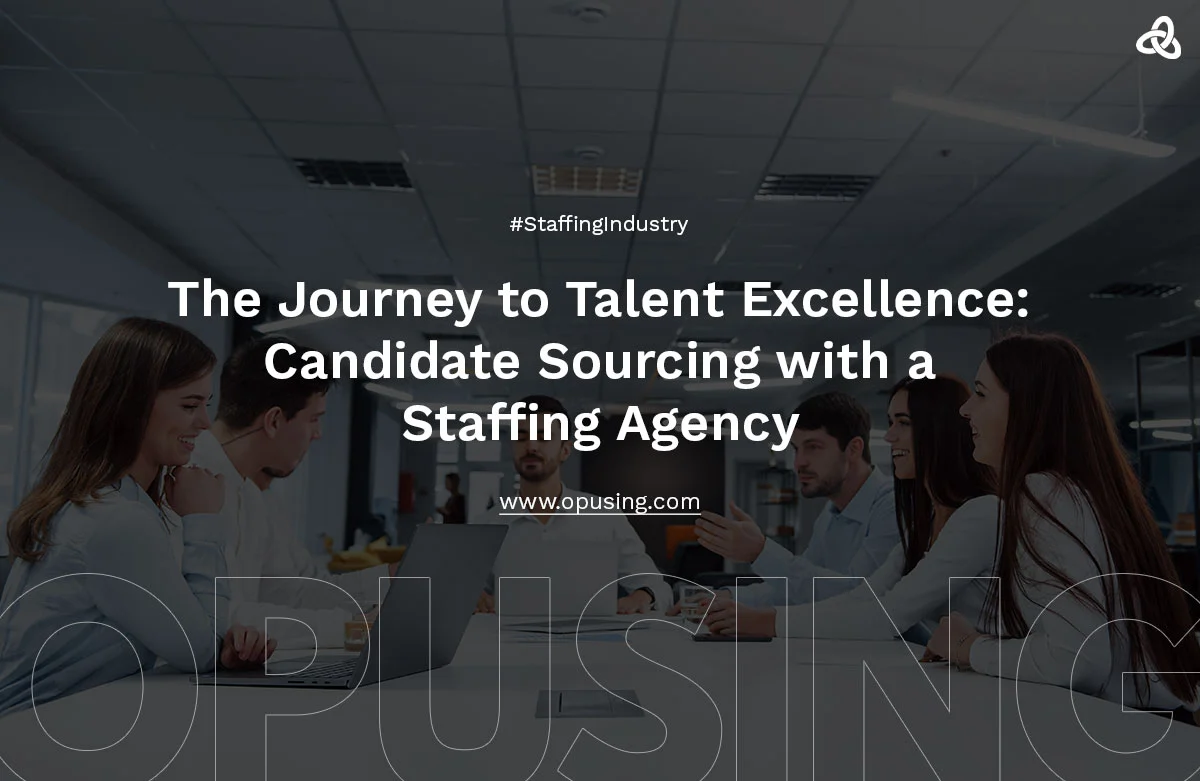2030 Work Trends: Tips for Talent with Staffing Services USA
 Shourya Mehta
Shourya Mehta- Sep 15, 2023

Introduction
US staffing services
to anticipate and adapt to these transformative changes. Step into the time machine of work and recruitment! Fasten your seatbelts as we transport you to the year 2030. Join us as we uncover the thrilling possibilities and challenges that await in the future of work. In this article, we’ll get to know the secrets of talent acquisition strategies instaffing services USA
, giving you the ultimate sneak peek into what's to come.From the rise of artificial intelligence and automation to the growing demand for flexible and remote work arrangements, we explore key trends that will shape the recruitment landscape. Moreover, we provide valuable tips and strategies for talent acquisition leaders to navigate these changes successfully, ensuring they attract and retain top talent in the ever-evolving world of work.
Rise of Remote Work and Gig Economy
By 2030, the world will be your office as remote work takes over. Leave behind the humdrum of the 9-to-5 routine and unlock the boundless possibilities of a global army of freelancers ready to conquer the work world. Time to break free from traditional work as it's not going to be desk marathons anymore! Success is going to be all about the impactful results you achieve, not the hours you log.
Degree? Skills say, "Hold my coffee!”
Employers are flipping the script, recognizing the real magic lies in skills and proficiencies. With technology rapidly evolving, talent acquisition leaders would adopt a skills-based hiring approach. They will collaborate with educational institutions and vocational training providers to ensure candidates possess the necessary skills for future roles.
Artificial Intelligence in Recruitment
AI-powered tools will revolutionize the recruitment process, automating administrative tasks and enhancing candidate sourcing and screening. Talent acquisition leaders will surely embrace AI solutions to streamline their operations and improve the efficiency of candidate selection.
Enhanced Candidate Experience
In 2030, candidate experience will be a critical factor in attracting top talent as the current trends indicate clearly. Organizations will surely invest in creating a seamless and personalized candidate journey, leveraging technology to deliver a positive and engaging experience. Talent acquisition leaders should develop robust employer branding strategies and ensure the candidate experience is consistent across all touchpoints.
Diversity and Inclusion as a Business Imperative
Talent acquisition leaders will prioritize even more on building diverse talent pipelines and implementing inclusive hiring practices as this trend is also going up the graph really quickly. Collaborating with staffing services in the USA can help identify diverse candidates and foster an inclusive work environment.
Emphasis on Upskilling and Reskilling
With technology advancing at its peak, upskilling and reskilling will be essential for workforce readiness. Talent acquisition leaders should partner with learning and development providers to design training programs that address emerging skill gaps and ensure continuous professional development.
Redefining Work Dynamics
The fusion of humans and machines takes center stage as automation and AI redefine job landscapes. To thrive, talent acquisition leaders must strategically pinpoint positions that call for uniquely human qualities such as creativity, critical thinking, and emotional intelligence, while cleverly employing technology for tasks that benefit from its precision and efficiency.
Data-Driven Decision Making
By 2030, data analytics will play a crucial role in talent acquisition. Talent acquisition leaders should leverage data to gain insights into workforce trends, identify skill gaps, and optimize recruitment strategies. Partnering with staffing services in the USA that provide advanced analytics capabilities can further enhance decision-making.
Employer Branding and Reputation Management
As the competition for talent intensifies, employer branding and reputation management will be vital for attracting and retaining top performers. Talent acquisition leaders would focus on creating an authentic employer brand that aligns with the organization's values and mission.
Engaging with staffing services in the USA can also help build a positive employer brand by providing access to top talent and promoting a strong company culture. According to a Glassdoor survey, more than 80% of employees and job seekers said a company's reputation impacts their decision on whether to apply for a job or not.
Agile Workforce Planning
In a rapidly changing business landscape, agile workforce planning will be crucial. Talent acquisition leaders should develop flexible strategies to address evolving talent needs, including building talent pools, developing succession plans, and leveraging contingent workers through staffing services in the USA.
Conclusion
In conclusion, the future of work and recruitment in the United States is on the brink of a profound transformation by 2030. Talent acquisition leaders must grasp and ready themselves for the impending changes. The top ten forecasts for 2030 offer invaluable insights into the trajectory of the industry, including the influence of US staffing services.
These projections illuminate the pivotal trends that will shape the future of work, ranging from AI and automation revolutionizing job roles to the escalating prevalence of remote work and the gig economy. Talent acquisition leaders must tailor their strategies and approaches to harmonize with these developments.
To flourish in this ever-evolving landscape, leaders should embrace cutting-edge technology, cultivate diverse and inclusive work environments, prioritize continuous learning and upskilling, harness data analytics for predictive hiring, and invest in fostering an appealing employer brand. Collaboration, agility, ethical deliberations, and social responsibility will also be critical in attracting and retaining top-tier talent.
By embracing these forecasts and implementing the recommended guidelines, talent acquisition leaders can strategically position themselves and their organizations for triumph in the future of work and recruitment. This is an exhilarating era brimming with opportunities, and those who proactively adapt and innovate will thrive in this dynamic realm.
Our Latest Blogs

7 Best Staffing Agencies Tips to Make Your Job Application Stand Out From the Crowd
We curated seven tips that the best staffing agencies will approve of to help your job application stand out....
Read More
Workforce Solution: Four Advantages of Converting a Temporary Staff to Permanent Employee
Hiring a temporary workforce is the most advantageous workforce solution. However....
Read More
Staffing Firm Edition: 4 Ways To Make Onboarding Process Effective for Remote Employees
Staffing firms will confirm that changing times calls for a process revamp. Now you need to adjust to....
Read More


Leave your thought here